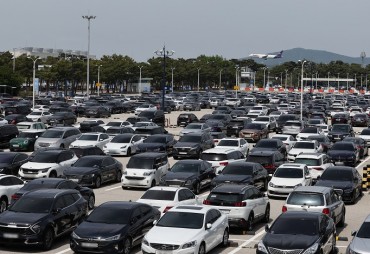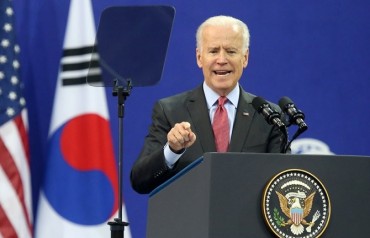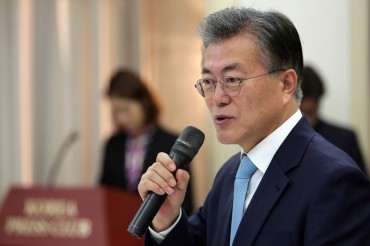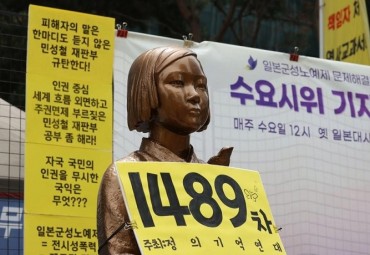
Inbound passengers wait to take COVID-19 tests at Terminal 1 of Incheon International Airport in Incheon, 27 kilometers west of Seoul, on Aug. 24, 2022, amid the spread of an omicron subvariant. (Yonhap)
SEOUL, Aug. 25 (Korea Bizwire) — South Korea’s new COVID-19 cases stayed above 100,000 for the third straight day Thursday amid concerns over a resurgence of the omicron subvariant.
The country added 113,371 new COVID-19 infections, including 369 from overseas, bringing the total caseload to 22,701,921, the Korea Disease Control and Prevention Agency (KDCA) said.
Daily infections jumped to 180,752 cases on Aug. 17 from 84,097 a day earlier. The daily tally then declined over the following five days, falling to 59,028 on Monday.
But the daily caseload rebounded to 150,236 on Tuesday and remained above 100,000 on Wednesday at 139,339.
The country reported 108 COVID-19 deaths, bringing the death toll to 26,332, the KDCA said. The fatality rate stood at 0.12 percent.
The number of critically ill patients came to 566, down from 573 a day earlier.
As of 9 p.m., South Korea had reported 96,968 new cases, down 12,365 from the same time the previous day. Daily cases are counted until midnight and announced the following morning.
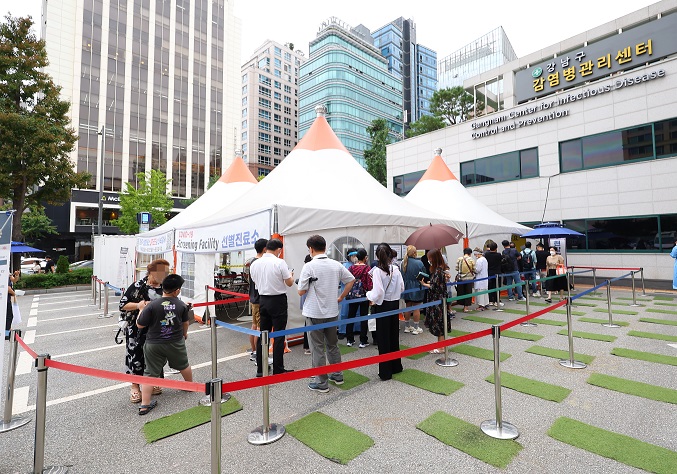
People wait to take a COVID-19 test at a clinic in Gangnam, southern Seoul, on Aug, 25, 2022. (Yonhap)
The recent decline in new infections raised cautious optimism that the latest virus wave may have passed its peak. But authorities remain on high alert over a possible resurgence in the COVID-19 pandemic this fall.
The KDCA said it expected the number of daily infections to show the reduction trend this week or next week, but the numbers of COVID-19 deaths and critically ill patients could increase in the next two to three weeks.
The health agency projected the numbers of critically ill patients and COVID-19 deaths could reach 800 to 900 and 100 to 140, respectively, in early September.
Of the locally transmitted 113,002 cases, Seoul reported 17,707 new cases, and Gyeonggi Province that surrounds the capital added 27,007 new infections.
Incheon, a port city 27 kilometers west of Seoul, identified 5,729 new cases. These three regions took up 44 percent of the daily caseload.
Since the first local confirmation of COVID-19 on Jan. 20, 2020, the country has gone through multiple major waves of the virus.
The latest wave came during the height of the summer vacation season, fueled by the highly transmissible omicron subvariant BA.5 and the eased virus curbs.
(Yonhap)



